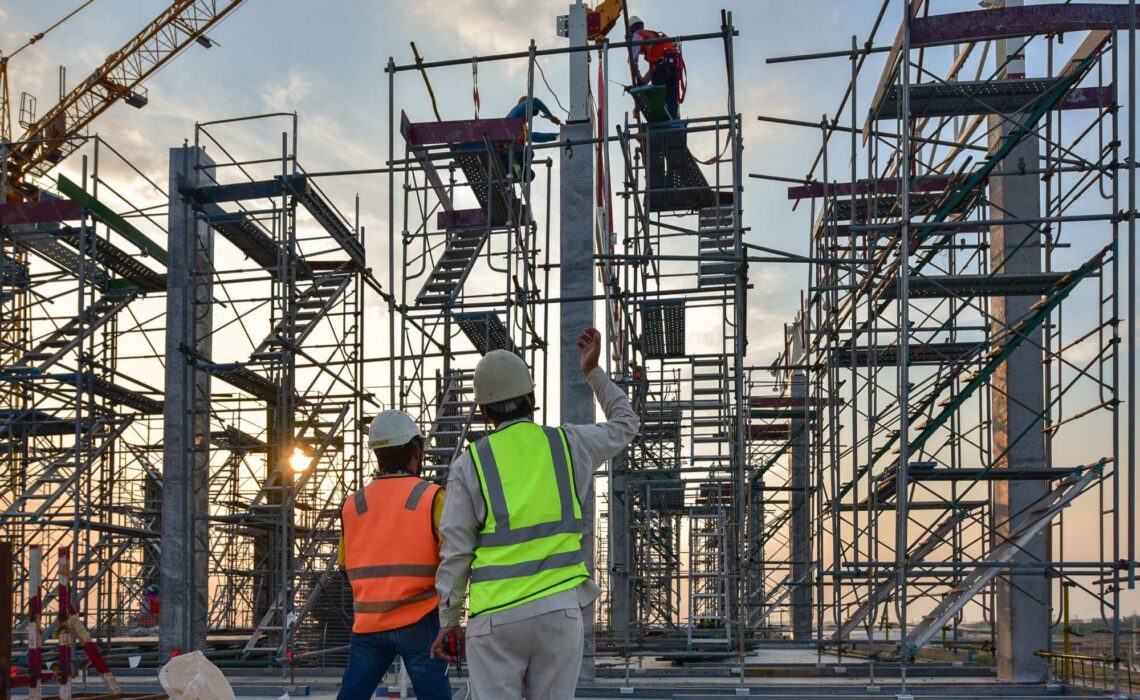Construction risks will vary depending on the infrastructural construction project being handled. The larger the structural project, the greater the risk.
One huge risk that affects large infrastructural projects is labor shortages. According to a McKinsey & Company report, the industry had a shortage of 400,000 construction positions as of October, even though construction wages have grown by 7.9% during the COVID-19 pandemic.
Here are other risks that affect large construction projects.
Risks affecting large construction projects
Table of Contents
1. Project management risks
A project risk is associated with the running of a construction project. Project managers must ensure that a project is effectively managed to reduce risks.
An example of a project management risk is poor communication between key players. Architects and structural engineers must communicate to identify design risks before they affect the project. Contractors also need to communicate with subcontractors in a timely manner before errors are implemented.
Another type of project management risk is scope creep, which is when a project is continuously changed without a clear process. For example, subcontractors may make design adjustments without authorization from contractors, engineers, and the project owner.
2. Financial risks
There are a lot of financial risks that affect large construction projects. One of them is the lack of enough operating capital. This can be caused by several factors, such as when the cost of materials suddenly increases or when banks increase their interest rates.
Other factors that increase the financial risks of large construction projects include the geo-location of the project and local taxes. Currency fluctuation rates will also increase the financial risks of a project.
3. Legal risks
Large construction projects are affected by legal risks, such as the project’s incompatibility with local regulations. For example, a construction project may be built in protected areas like national parks. These legal disputes can stall the entire project and even result in the project owner being fined by the courts.
Other legal risks are contractors being sued by workers because of negligence or failure to comply with local hiring laws.
3. Societal and logistical risks
Societal risks are caused by local communities, who might challenge the implementation of the project in a court of law. Resistance from society can also make it hard for the project manager to obtain local labor and construction materials.
Logistical challenges in large construction projects happen due to a lot of moving parts that need to be made available. Project managers need to plan how materials will be sourced and transported to the construction site.
Other challenges can be the need for transport, spare parts, labor, and fuel. Beyond transport and materials, finishing a project safely requires planned site turnover tasks that remove lingering hazards and prepare the space for the next phase. Incorporating professional cleaning into logistics reduces risks associated with dust, loose debris and contaminated waste which can otherwise slow commissioning and increase liability.
For many contractors in the region, engaging specialized teams like Post construction cleaning services Dallas, or elsewhere, can ensure thorough demolition and post‑construction cleaning, as well as trailer and hazardous material removal performed to industry standards. That proactive step not only improves safety for workers and inspectors but also streamlines inspections and accelerates handover to owners or occupants.
Similarly, engaging experienced site-preparation partners early in the programme can reduce the very logistical risks described above. Specialist teams that focus on earthworks, drainage and surfacing can coordinate temporary access, proper drainage runs and durable tarmac surfacing to avoid costly rework and commissioning delays.
In the UK context, working with local groundwork contractors who understand permitting and ground conditions can often smooth inspections and minimise disruption to neighbouring communities. That proactive coordination helps keep large infrastructure projects on schedule while reducing safety and liability exposures.
How to mitigate risk for large infrastructure projects
1. Use technology
Use technology like ALICE to your advantage when working on large infrastructure projects. Construction pioneering platforms are designed for use in complex, high-value infrastructure projects like railway construction.
The best platforms will optimize essential project resources, helping to reduce labor costs, identify risks, and come up with alternatives and options.
If you’re unsure about the impact your decisions will have, technology can help you quantify these effects. For example, if you’re unsure about whether to close down one or two lanes, the right platform will give you a scientific way to make an accurate decision.
2. Demand a performance bond
Large construction projects are risky. Therefore, project owners must protect themselves against contractors who do not deliver on what was promised. To do this, the project owner must demand a performance bond. An insurance company or a bank issues the performance bond on behalf of the contractor.
Performance bonds are usually a requirement when dealing with government projects, such as road and bridge construction. The amount of performance bond will depend on the nature of the project, but it’s usually 3% of the value of the contract.
3. Implement a cost-plus contract

Some contractors use fixed-price contracts instead of a cost-plus contract. When you use a fixed-price contract, you charge a lump sum amount to the project owner. Though this approach can be lucrative, it’s risky for large projects because the cost of materials can increase. Also, unforeseen risks such as inflation can affect your margins.
To safeguard your margins from unforeseen risks, contractors should use a cost-plus pricing strategy instead. Using this strategy, you’ll only be paid for the expenses used, with an additional fee as part of your profit. This strategy will shift most of the risk from you to the customer, and you’ll be assured that your profit margins are safe.
4. Have a retainage clause
A retainage clause stipulates that you’ll hold a portion of the payment until the contractor fulfills the terms of the contract. A retainage clause incentivizes the contractor to complete a project because they know they’ll be paid when they complete their work.
Retainage contracts are a bit complicated to draft, which is why you should always seek the services of a qualified attorney. This way, you won’t violate local laws without knowing about it.
5. Have an insurance policy
Construction contractors always bear the most risk. Therefore, you should have an insurance policy that safeguards you when there’s a fluctuation in material costs. This policy ensures you receive an insurance payout if the cost of raw materials exceeds a certain level.
This policy is important, especially if the material market is unpredictable. For your policy to be active, you must pay monthly premiums to the insurance company.





No Comments